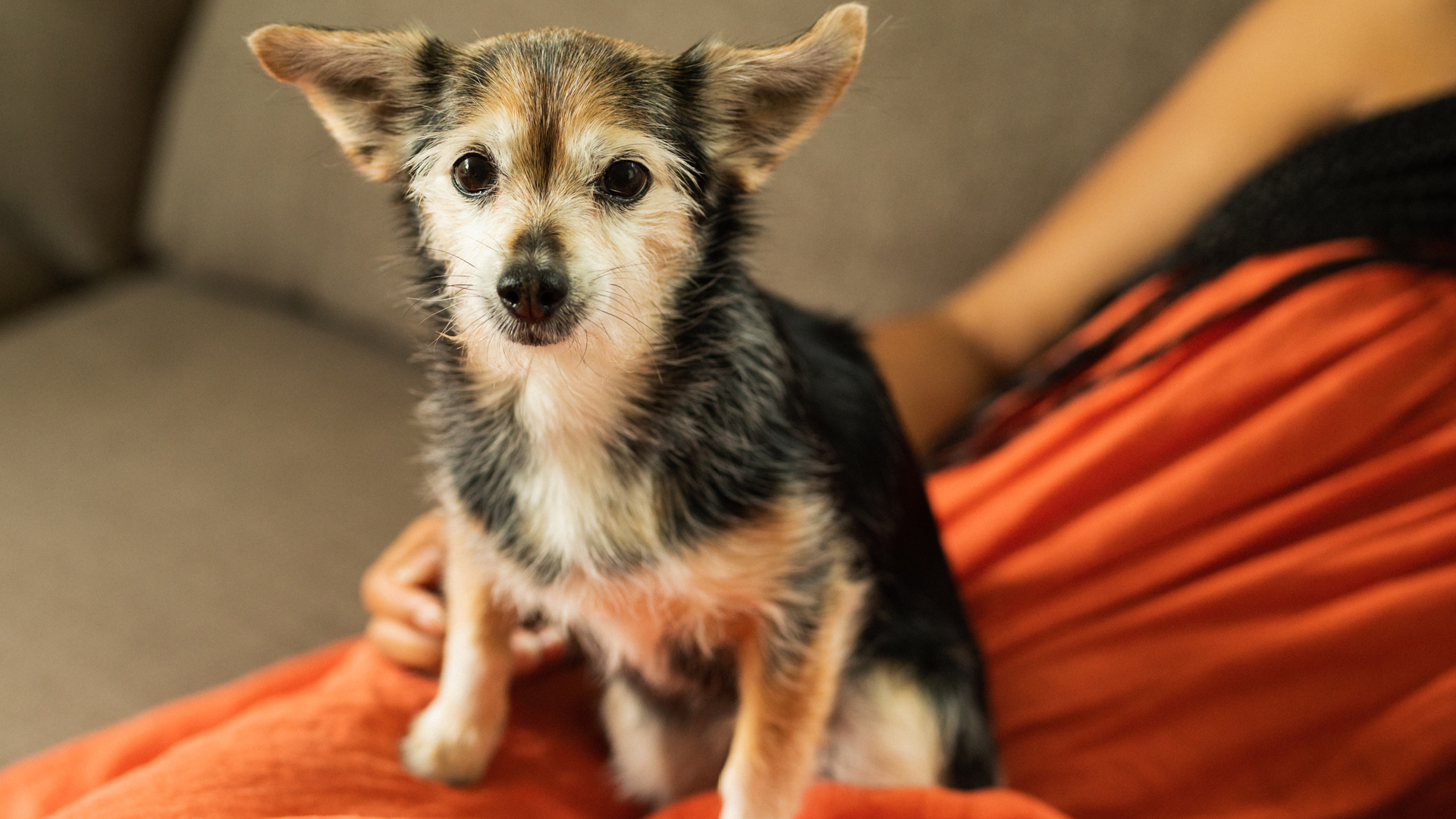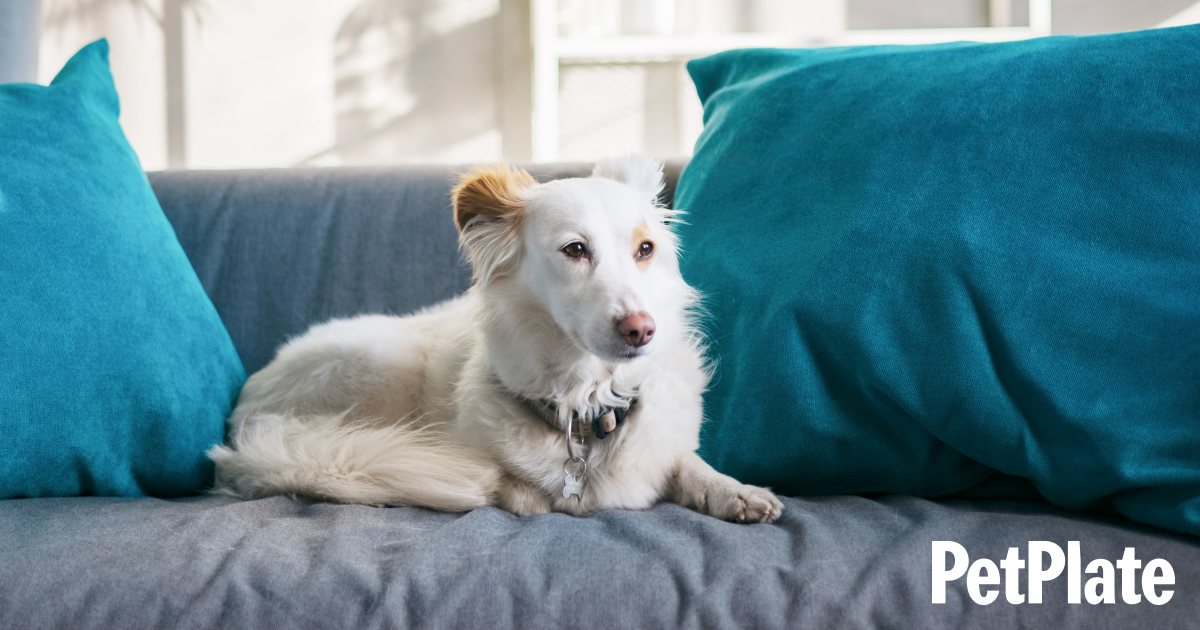
We never like to see our furry friends struggling or stressed. So what can we do to help them?
It’s normal for a healthy pup to feel a little bit anxious when presented with an unfamiliar situation. However, if your pooch repeatedly shows a severe response to something harmless, then they may be struggling with stress or anxiety.
Anxiety in dogs is a more common problem than many of us realize – a 2020 study found that more than 70% of dogs display some form of anxiety. It can be difficult to diagnose too – sometimes the symptoms are subtle and can be easily confused with other possible causes.
That’s why it’s important to become familiar with the early warning signs of anxiety, so you can take measures to calm your pooch down before they feel worse. Read on to find out everything you need to know about anxiety in dogs.
What Causes Anxiety in Dogs?
Common Signs of Dog Anxiety
Common Types of Dog Anxiety
How to Treat Anxiety in Dogs
Frequently Asked Questions
Anxiety-Focused Training
What Causes Anxiety in Dogs?
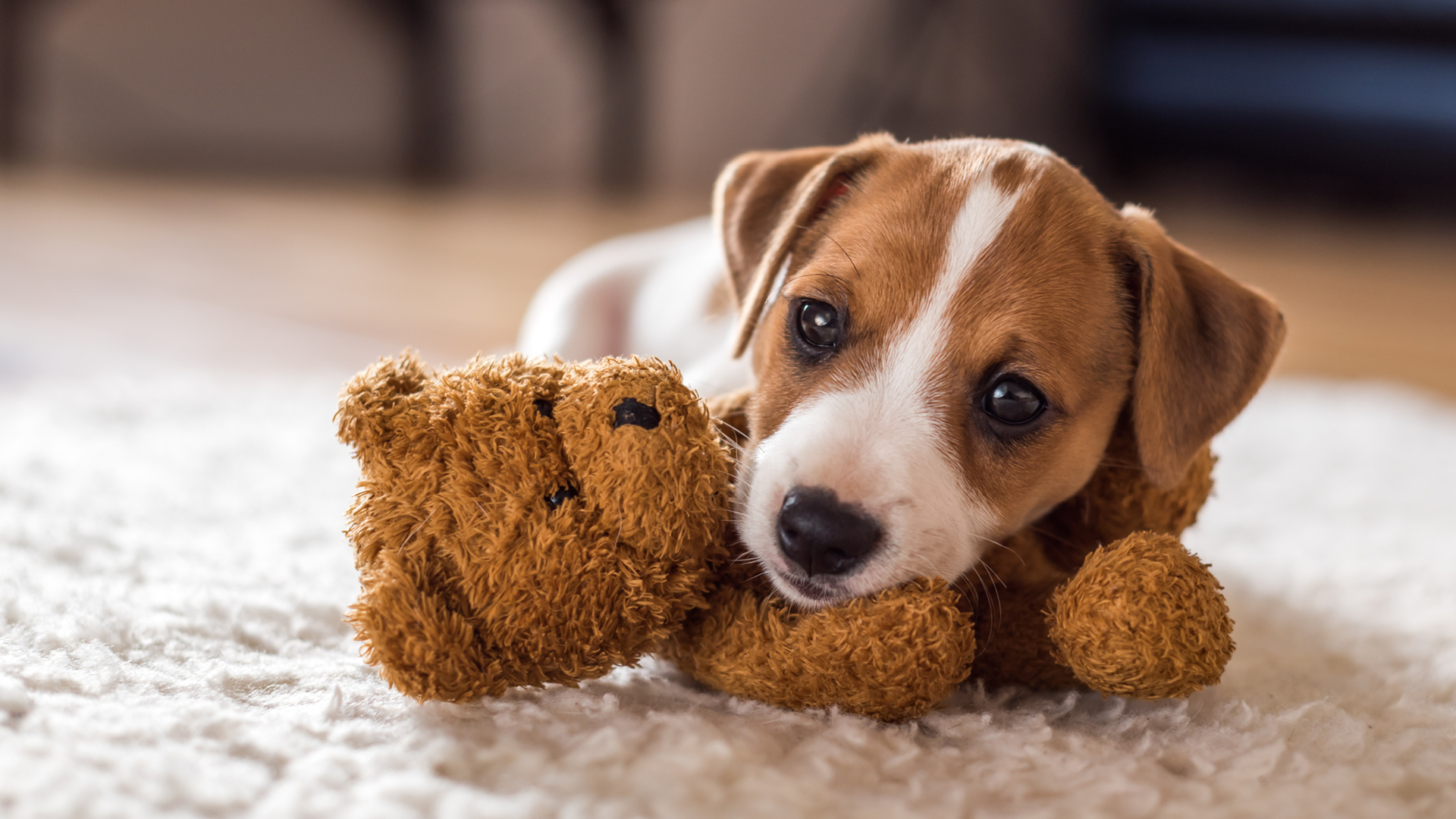
There are multiple reasons why your pup might feel anxious. Like with humans, the development of anxiety can be the result of a variety of different factors, and can seemingly arise from nowhere.
One of the most common causes of anxiety is a lack of proper socialization as a puppy. Without this crucial period of training, your pooch may develop anxiety towards unfamiliar situations that will carry over into adulthood.
Another possible cause could be genetics. Studies have shown that certain breeds have a predisposition to developing anxiety. Age also seems to be a contributing factor, as older dogs tend to have a higher chance of experiencing anxiety from loud noises.
Signs of Anxiety in Dogs
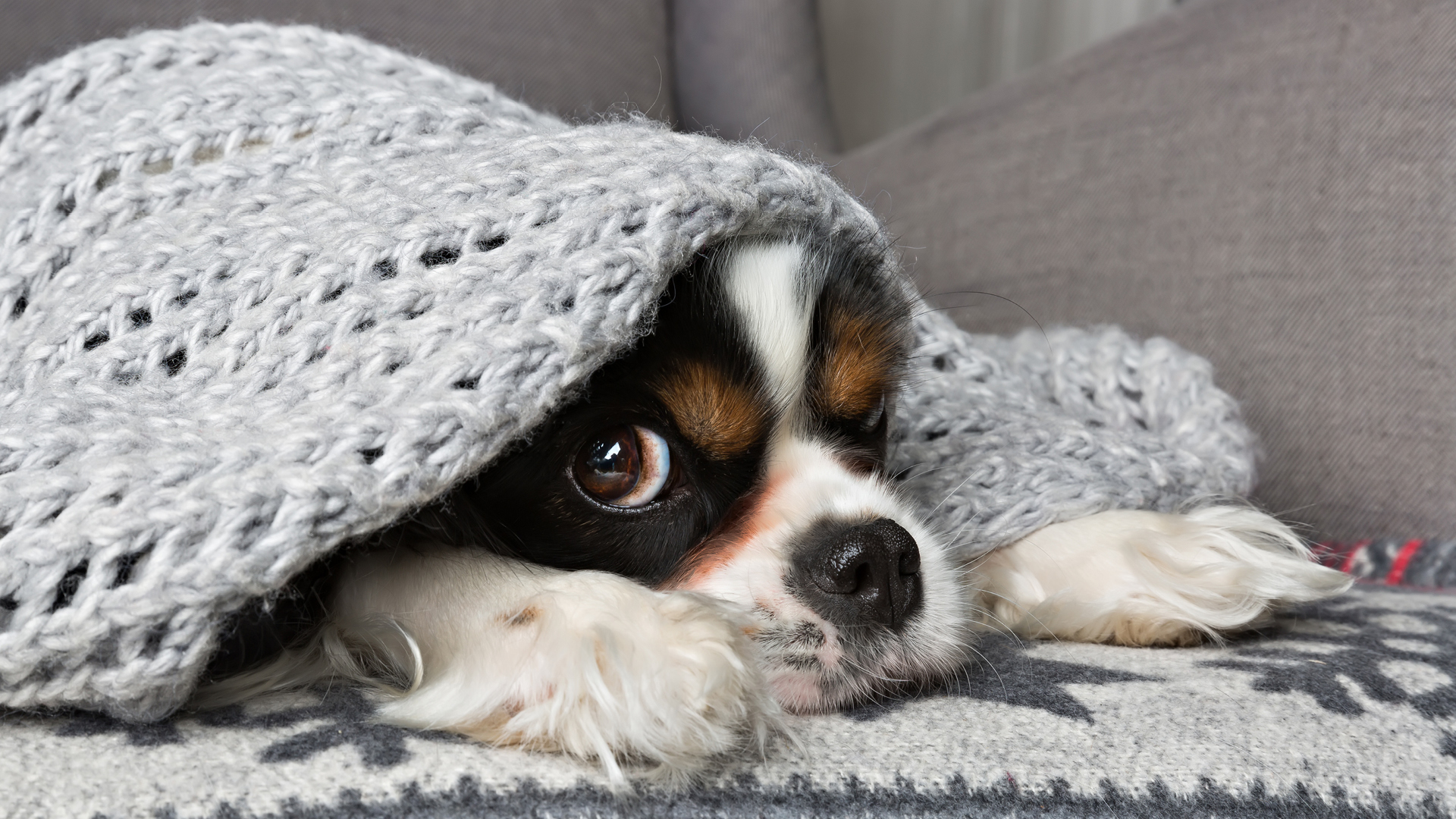
While every dog is different and deals with anxiety in their own way, there are usually some tell-tale signs of a nervous pupper.
Anxiety symptoms in dogs are most commonly triggered by storms, loud noises, being away from their owners, and meeting strangers or other dogs. It can be a good idea to keep a close eye on your dog during these situations to see if they’re becoming stressed out.
Below are some of the most common behaviors seen in anxious dogs. Take a look to see if you recognize any of them in your own pooch.
- Howling and Barking – Usually associated with separation anxiety, but this can occur with other types of anxiety as well.
- Shivering and Whining – One of the easier tells is frequent whining. They may also tremble and place more weight on their back legs. This is called cowering.
- Panting and Pacing – Your dog may be panting and pacing from room to room without a discernable reason. They may seek out family members or continue to pace about.
- Hiding – A dog may react to stress by withdrawing from the situation entirely. They might hide behind you, or find a quiet out-of-the-way area to hole up in.
- Urinating and Defecating in the Home – An anxious pupper may pee and poop within the home, even if they’re fully housebroken.
- Escape Attempts – Some pups may try to escape from the situation. In extreme cases, they may try to break through doors or windows.
- Destructive Behavior – As a coping mechanism, dogs may chew furniture or dig holes in the yard.
- Refusal of Food – A dog that has been dealing with untreated chronic anxiety for a prolonged time may begin to refuse food. They may also experience changes in their normal bodily function, such as diarrhea.
- Aggression – An anxious dog may snap or even bite if they’re in a fearful situation. This is more likely when the cause of anxiety is a stranger or another dog.
Types of Anxiety and How to Handle It
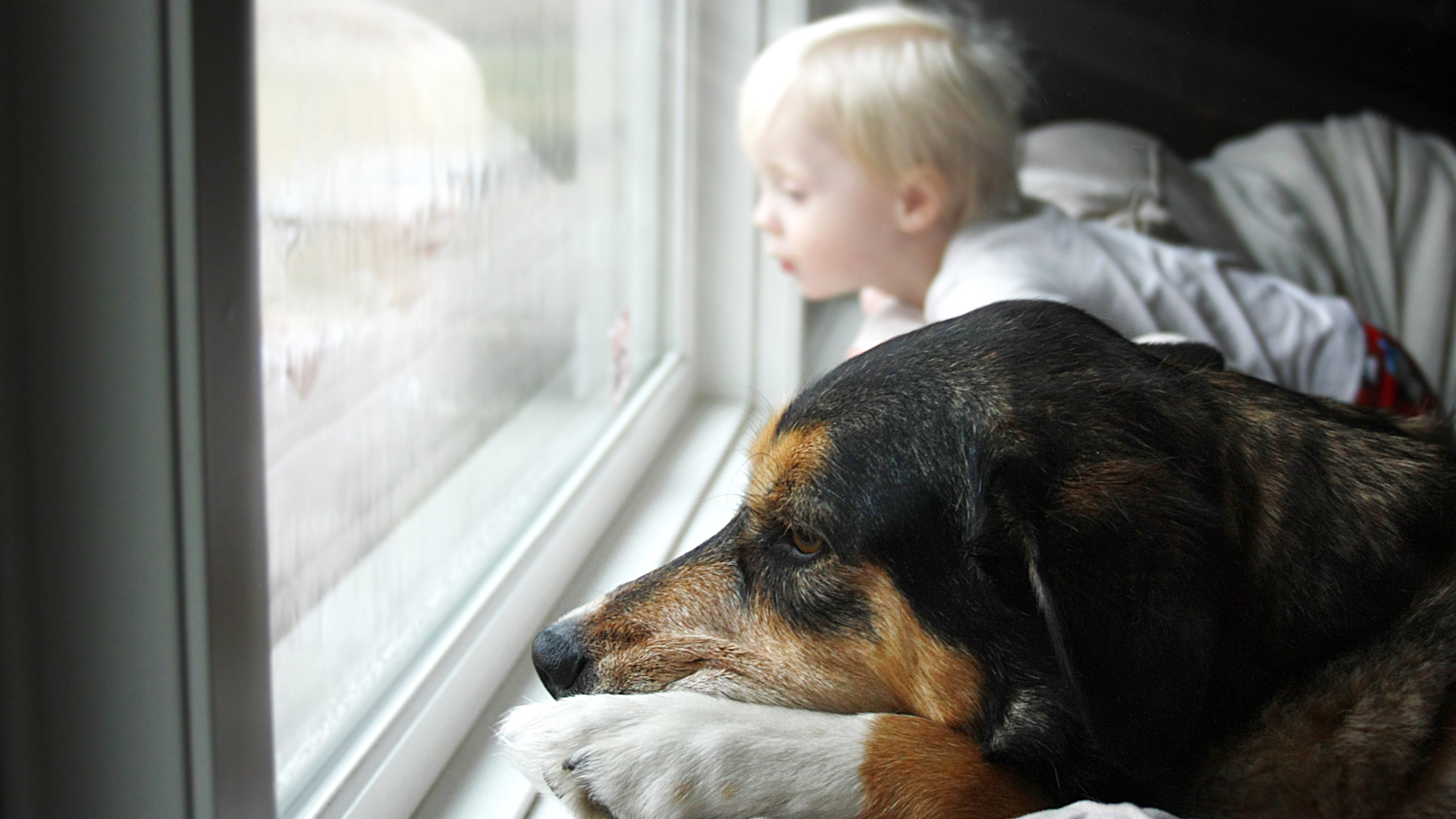
There are many different causes of anxiety, but the good news is that the condition is treatable in most cases. If it’s just some mild nervousness, you may be able to help your dog overcome it entirely – however, in severe cases, the best you can do is help manage your pup’s anxiety.
What you may need to do to help your pup can differ depending on the type of anxiety. Below are some of the most common causes of anxiety in dogs, and tips on how you can help them overcome it.
Remember, if you need extra help or your dog seems to be experiencing a particularly severe case of anxiety, work with your vet or a licensed canine behaviorist for the best results.
Severe Storm Anxiety in Dogs
A storm can be very frightening to a dog, who may not understand what is happening. They may react to the rumbling of thunder, the flashes of lightning, or even the change in barometric pressure as a storm approaches.
One of the best things you can do is create a calm and comfy den for your pooch in the quietest area of the house. You should do this well in advance of the storm actually hitting your home – especially if your pooch starts to become uncomfortable from the change in pressure.
You should try to fill this den with your dog’s favorite toys, blankets, and items with your own scent on them. Be sure to keep any curtains and blinds drawn to help block out any flashes of lightning. It can also be good to put a TV or a radio on at a comfortable volume within the room, as this can act as white noise and distract your pooch from the thunder outside.
It’s also good practice to keep any windows and doors firmly locked during the storm, especially if your pup has severe storm anxiety. This can help prevent any escape attempts that may place them in a dangerous situation.
Before they get so stressed that they refuse food, try a calming supplement. Our vet-formulated Chill Out soft chews are designed to be palatable, so they go down even easier than a spoonful of sugar!
If your pup is calmer with you by their side, try to stay with them through the worst of the storm. Before you both know it, the storm will pass and your pup will start to feel a lot brighter!
Loud Noises
Another common cause of anxiety within dogs is caused by loud noises. The offending sound could be from a wide range of things – common causes can be fireworks, construction work, and nearby parties.
A dog’s hearing is four times more sensitive than our own – so it’s no surprise that these sounds can startle them, especially as your dog may see them as signs of a threat. As we cannot control when loud noises occur, it’s best that we try to teach our pups to not be afraid of these sounds.
To do this, we will need to expose them gently to the sound that causes them anxiety, within a safe and controlled environment. Say that your dog is scared of fireworks, as many unfortunately are. What you could do is use an audio recording of fireworks and play it at a low volume to your pooch, within a calm and otherwise quiet environment.
If your pup responds calmly, give them a special, high-value treat (we have healthy, organic treats that are proven to be absolutely delicious – give them a try here!). From here, you can raise the volume slightly, and see how they react.
In the event that they do show distress at any point, stop the recording and try again another time at a lower volume. Over multiple sessions, you should be able to show your pup that the sound isn’t scary at all. In fact, it leads to good things!
Of course, this only works when you have plenty of time to prepare. If these sounds are stressing your pup out right now, you can use the den method outlined above. Create a nice and peaceful space, and use white noise to distract your pooch from the noise.
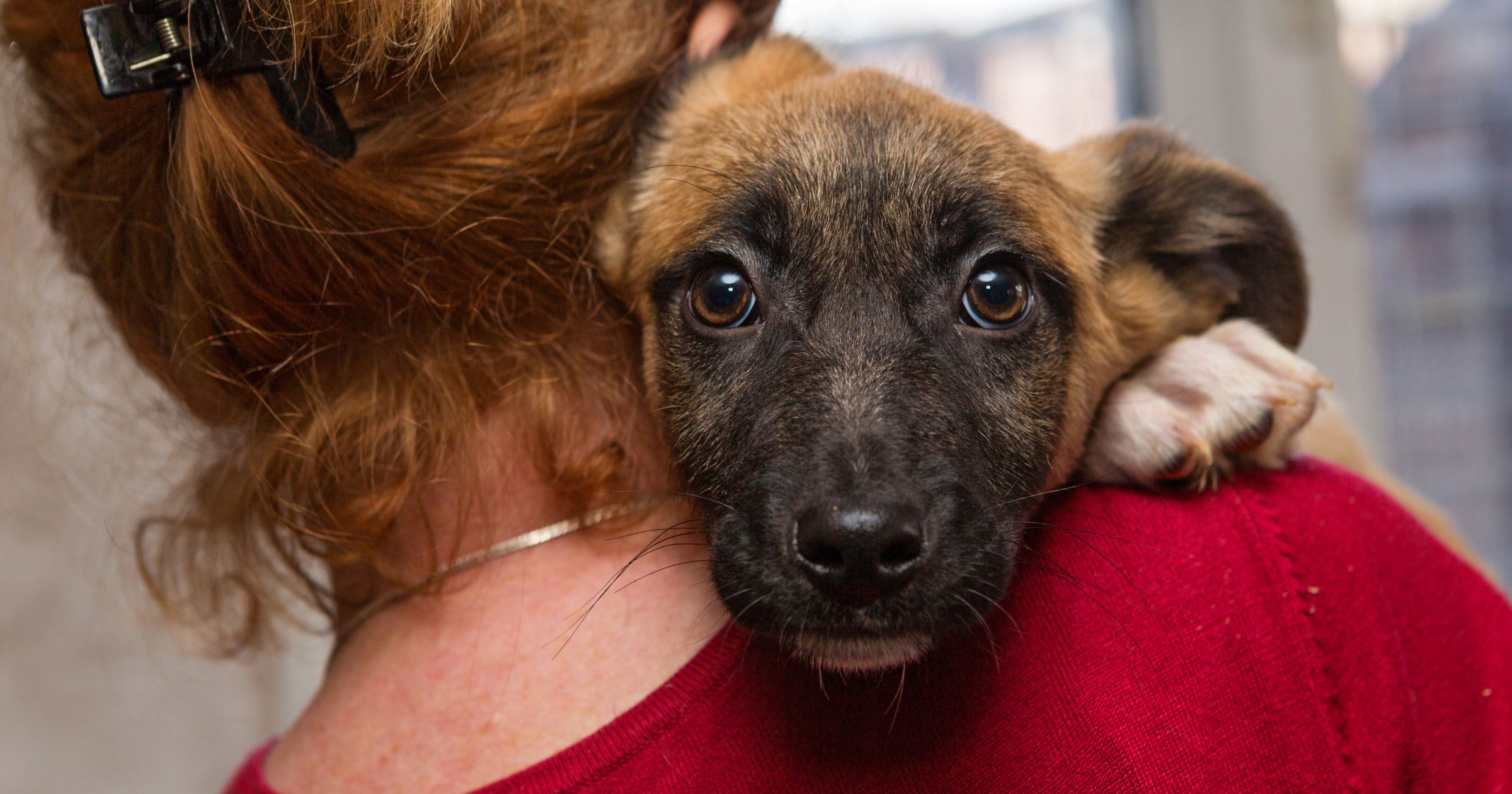
Separation Anxiety in Dogs
If you come back from work to a home filled with destroyed furniture and pee stains, you likely have a dog that is suffering from separation anxiety. Perhaps you’ve received a complaint from a neighbor that your dog is howling incessantly while you’re away – this is another tell-tale sign.
As many of us can’t always be at home with our pup, separation anxiety can present a big problem. Luckily, it can be solved with some effort!
To start, it’s good to remove all the negative associations that your doggo has connected with you leaving. Many dogs learn to react anxiously when they see their owners perform common actions leading up to a trip outside – such as grabbing keys or putting on a coat. This can lead to your pup becoming anxious before you’ve even left the home.
To solve this, you can perform these actions without actually leaving. For example, you could pick up your keys and then sit down to watch TV. Put on your coat and cook dinner. Over time, your pooch will no longer associate these actions with you leaving.
To fix the anxiety that occurs while you’re not there, you can train your pup to be more comfortable with having you out of their sight. Tell your dog to stay in an area where they cannot see you, such as the other side of an ajar door. Reward calm behavior with high-value treats! In further sessions, increase the distance between you.
Over time, you should notice less anxiety from your pup when you leave the home. It’s also a great idea to ensure your pooch has plenty of stuff to do while you’re gone – puzzle toys and hiding treats for them to find can be a good way of achieving this. And don’t forget to offer them one of our human-grade calming chews, made with L-theanine and ashwaganda to help alleviate stress and promote relaxation.
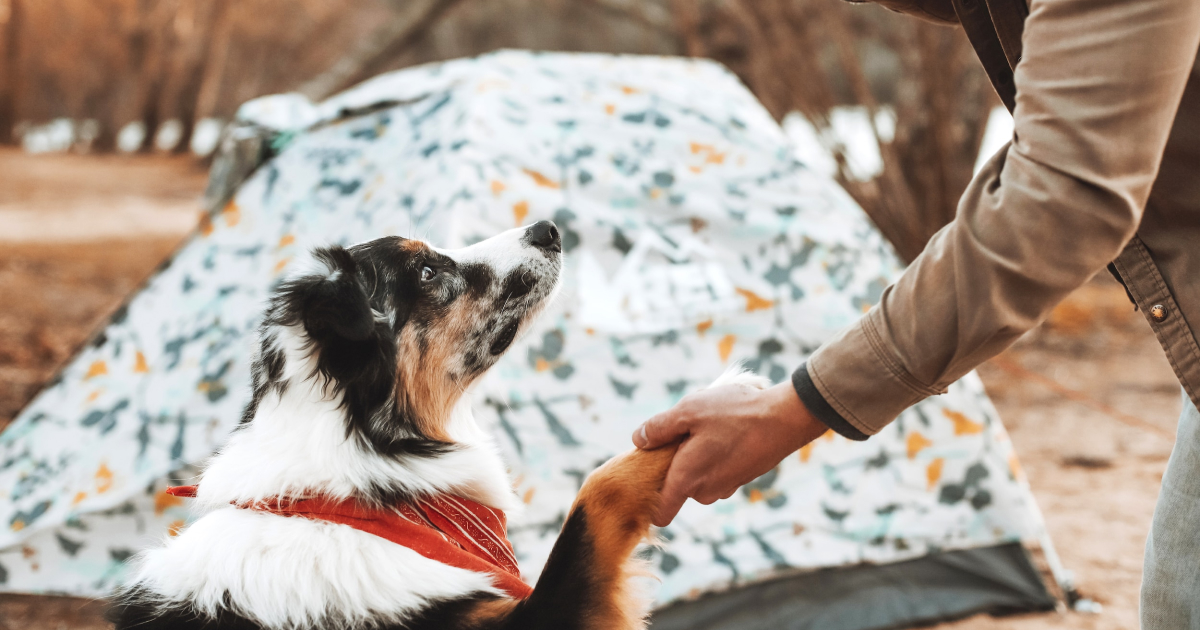
Meeting Strangers and Other Dogs
A dog who is anxious around strangers and other dogs can make daily life a lot more difficult. Your dog may cower behind you upon spotting another dog across the road, or you may fear having guests over because your pooch may bark or act defensively.
Helping your doggo overcome this can be difficult, but it’s possible to help lower your dog’s anxiety over time with repeated training. Walks can be a great way of achieving this, as it exposes your pup to new humans and dogs naturally.
To begin with, you can walk your pup in a quieter area. If your dog spots another pupper, praise them for as long as they remain calm. High-value treats are also useful here! If they show anxiety it’s important that you don’t baby them, as it may actually reinforce the negative behavior. Instead, ignore any nervous behaviors and continue the walk.
As your pup becomes more confident, you may try introducing them one-to-one with another dog or human in a safe environment. It’s helpful if the other dog isn’t boisterous and high-energy – try to find someone with a friendly and docile pup to work with. Humans should also give the pup as much space as it needs to be comfortable.
By slowly raising the bar with your pooch and introducing them to more dogs and humans, you should see their anxiety levels decrease. It’s important to note that if your dog is showing aggressive behaviors at any point, it’s recommended to seek the help of a professional canine behaviorist rather than try to deal with the problem yourself.
How to Support Dogs with Anxiety

All dogs are unique, and may experience anxiety for a variety of reasons. So it’s best to rule out other possible health problems that may be causing it before starting any treatments. Once other health problems are ruled out, consider some of the following methods for your dog.
Here are some common ways to help address dog stress:
- Dog anxiety vest: Dog anxiety vests work like weighted blankets do for humans. A dog anxiety vest is a weighted vest you place on your dog. The additional weight is like a calming “hug,” which relaxes many dogs and may lower their heart rate.
- Anxiety meds for dogs: No medication will cure your dog’s anxiety. However, anxiety medications for dogs can relieve your dog’s stress by either boosting positive neurotransmitters like dopamine, gamma, and serotonin or blocking specific neurotransmitters from being reabsorbed into the nerve cells. Both types of medications reduce anxiety and stress in dogs. Speak with your veterinarian if you’re considering this treatment choice for your dog’s anxiety so that you can discuss the best medications for them and the appropriate dosage.
- Dog anxiety bed: Dog anxiety beds usually have a cave or den-like structure with raised rims, which helps some dogs feel calmer and more protected in their environment. They may also reduce negative behaviors as a result of overstimulation.
- Calming supplements for dogs: PetPlate’s supplements are made with ingredients like ashwagandha and L-theanine to create a calming, relaxing effect in dogs, which may help with tense situations like thunderstorms or car rides.
- High anxiety dog crate: Dogs are natural den animals, so a comfortable, inviting crate is important so that they have a safe space to escape. For dogs with high anxiety, it’s recommended that pet parents choose a steel crate so their dog can’t chew through the material. Crate covers that simulate a dark cave may also help your dog feel more comfortable. Choose a crate that is just big enough for your dog to stand and circle in. Place soft padding in the crate to make it cozy.
Before trying something new, consider the type of anxiety they have as well.
If your dog struggles with separation anxiety, an anxiety dog crate or dog anxiety bed combined with a calming melatonin supplement may be a great choice. For a dog that suffers from ongoing anxiety throughout the day, a prescription anxiety medication may be needed. A dog that suffers from anxiety due to loud noises or thunderstorms may prefer an anxiety vest for dogs.
Frequently Asked Questions About Dog Anxiety
What dog breeds have the most anxiety?
Any dog can have anxiety. However, some dog breeds are more prone to anxiety. Research has found that Wheaten terriers, Lagotto Romagnolo, and mixed breed dogs are most sensitive to noise. The most fearful dogs included Shetland dogs, Spanish water dogs, and mixed breed dogs. In contrast, studies found miniature schnauzers to be the most afraid of and aggressive towards strangers. In the study, female dogs were more likely to show fear, while male dogs were more likely to show signs of impulsivity or aggression while anxious.
Can I give my dog Benadryl for anxiety?
As always, you should consult with your vet first. They may recommend Benadryl for temporary relief. However, you should always consult with your veterinarian before giving your dog Benadryl or any other medication or supplements. Benadryl is typically used for allergy treatments but makes many people and dogs drowsy as a side effect, which is why it may be effective for calming anxious dogs.
Does anxiety in dogs get worse with age?
Anxiety in dogs can get worse with age. Some dogs experience cognitive dysfunction and decline as they age, leading to confusion and changes in their memory, sight, smell, hearing, and awareness. These factors can cause your dog to behave and respond differently to stimulation. Older dogs may also develop certain illnesses that cause distress, anxiety, and confusion. In addition, pain may cause a dog to become more stressed out and reactive, resulting in anxiety and unusual behaviors. So, anxiety in dogs can worsen with age, although this doesn’t happen with all dogs.
Does anxiety shorten a dog’s life?
Anxiety may shorten a dog’s lifespan. There isn’t a specific reason that anxiety itself may cause premature death. However, the stress resulting from ongoing anxiety can harm a dog’s quality of life and lifespan. Fear of strangers may be especially taxing on the body and mind, resulting in a shortened lifespan. Certain studies have also shown that a pet parent’s belief about how “well-behaved” their dog is also positively correlated with their dog’s lifespan. So, how we think about our dogs and treat them may also exacerbate a dog’s anxiety and affect their lifespan. If your dog has ongoing anxiety, consult with their veterinarian for appropriate lifestyle changes and treatments to reduce your dog’s anxiety.
Help Your Dog Overcome Anxiety with PetPlate

Anxiety in dogs can happen for many reasons, from situational anxiety, like car rides or thunderstorms, to separation anxiety, to anxiety caused by overstimulation or loud noises. Regardless of the cause, your dog doesn’t have to suffer. Whether your dog has mild anxiety or severe anxiety, help is available.
Our 100% human-grade, vet-formulated Chill Out health supplements are made with ashwagandha, which is known to help reduce cortisol, a marker of stress, and L-theanine, which promotes relaxation. Your doggo’s tastebuds will achieve zen too—each soft chew is carefully crafted with organic ingredients like peanut butter and carob for exceptional quality and flavor!
Retraining and positive reinforcement can also combat your dog’s stress response by exposing them to their fear, helping them to overcome it in the process. For some dogs, this may look like regular walks that expose your dog to the outdoors and strangers or introducing your dog to strangers in a safe environment. One of the best ways to reinforce training is through the use of treats! Our Chicken Apple Sausage Bites are high in protein, vet-designed, and made from human-grade ingredients.
Our meals are also perfect for pups who may be experiencing a sensitive stomach due to stress – we’d recommend the Tail Waggin’ Turkey and Lip Lickin’ Lamb meals, as both are easy on the stomach. Check us out now and see how we can help!
